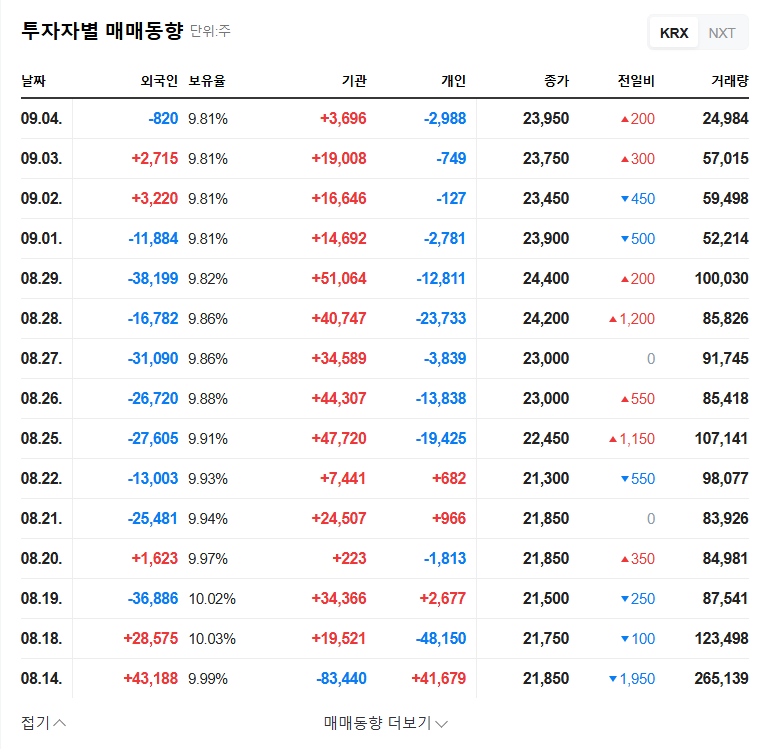Newkizone: Analysis of CEO Jo Sung-eun’s Major Shareholding Report
On July 16, 2025, Newkizone announced the (brief) Major Shareholding Status Report for stocks by CEO Jo Sung-eun. This report indicates that CEO Jo Sung-eun newly reported holding 1,339,200 shares (16.95%) of Newkizone stock following its KOSDAQ listing. The purpose of this holding was explicitly stated as passive investment. Given the significant increase in shareholding from 0% prior to the report, investor attention is understandably high.
Newkizone’s Corporate Fundamentals: Mixed Signals
A close examination of Newkizone’s current fundamentals reveals a mix of positive aspects and areas of concern.
Sales Growth Amidst Profitability Decline
According to the 2024 consolidated audit report, Newkizone showed growth with an increase in consolidated sales compared to the previous year. However, sales based on the controlling company’s key financial indicators have been on a continuous decline since 2022, likely due to factors such as the liquidation of consolidated subsidiaries. Further verification is necessary.
More significantly, while operating profit increased, the operating profit margin decreased to 9.02% on a consolidated basis and 2.36% on a parent company basis. The net profit margin has also been steadily declining. The primary reasons for this profitability deterioration are presumed to be a combination of: ▲Increased cost of goods sold and selling, general, and administrative expenses ▲Rising raw material prices ▲Weakened consumer spending due to economic downturns ▲Decreased company competitiveness. The liquidation of Newkizone Global likely had a negative impact on profitability.
Debt Ratio Reduction and Liquidity Risk
While the debt ratio has significantly decreased due to the conversion of convertible redeemable preferred stock, the volatility of short-term debt still poses a liquidity risk. Overall, Newkizone’s fundamentals are currently assessed as somewhat concerning.
Stock Price Impact Analysis: Positive Signal vs. Fundamental Burden
The closing price on the announcement date (July 16, 2025) was 12,710 KRW, a slight increase from the closing price of 12,640 KRW on the listing date (July 9, 2025). However, this represents a considerable drop from the high of 15,570 KRW on the listing date, indicating significant stock price volatility since listing. The stock price showed a slight downward trend even after the announcement.
The major shareholding report provides clear information to investors. Even if for passive investment purposes, it can be interpreted as a positive signal, potentially enhancing market confidence. However, the deteriorating corporate fundamentals are likely to exert a greater negative impact on the stock price. Therefore, the positive impact of this announcement on the stock price is expected to be limited.
External Environmental Factor Analysis
External environmental factors that could influence Newkizone’s stock price and corporate value include:
- Exchange Rates: Recent volatility in the KRW/USD and KRW/EUR exchange rates has been minimal, suggesting a limited short-term impact. However, long-term exchange rate fluctuations can affect profitability.
- Raw Material Prices: Oil prices remain stable, but the Baltic Dirty Tanker Index’s decline could positively impact transportation costs.
- Interest Rates: While US and Korean benchmark interest rates have stabilized after a period of increase, the burden of funding costs remains. US and Korean 10-year Treasury yields also influence Newkizone’s funding and investment decisions.
- Global Economy: The decline in the China Containerized Freight Index reflects concerns about a global economic slowdown, which could negatively impact Newkizone’s sales.
Conclusion and Future Investment Strategy
The announcement of CEO Jo Sung-eun’s major shareholding report is expected to have a limited short-term boost on Newkizone’s stock price. The continued deterioration of the company’s fundamentals is likely to place a greater burden on the stock. Therefore, investors should approach with caution and consider the following additional analyses for more accurate investment decisions:
- Clarify Discrepancies in Financial Reports: It is essential to pinpoint the exact reasons for the differences between the audit report and key financial data.
- In-depth Analysis of Profitability Decline: A thorough examination of the root causes of declining profitability, including cost structure, competitive landscape, and internal efficiency, is required.
- Assess Liquidity Risk: A detailed analysis of cash flow, ability to meet short-term debt obligations, and future sales projections is necessary to evaluate liquidity risk.
- Analyze Financial Impact of Subsidiary Liquidation: Understand the specific financial implications of the Newkizone Global liquidation.
- Evaluate Future Growth Strategies and Competitiveness Enhancement: Assess the company’s future growth strategies and plans to strengthen its competitive edge.
- Monitor CEO’s Management Strategy Changes: Keep a close watch on any shifts in management strategy and investment plans following CEO Jo Sung-eun’s increased shareholding.
This analysis is based on the information provided, and more accurate predictions will be possible with the acquisition of additional data and in-depth analysis. We advise making investment decisions prudently.


